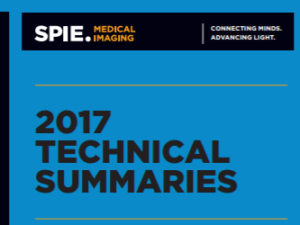Barco’s medical group presented a number of studies at the SPIE Medical Imaging Conference, February 11-16 in Orlando, Florida. The papers addressed the workflow in digital pathology reading, as well as the interpretation of colour medical images. The company said that it has developed diagnostic display systems and technologies designed to empower radiologists to work more efficiently and diagnose more accurately to meet the demand of a growing workload in an era of unprecedented healthcare service delivery.
In digital pathology whole slide imaging (WSI), the company said, pathologists need to pan from one region of a very large image image to another. This panning introduces artefacts and presents challenges to the workflow. An ongoing research study by Barco uses its VCT (Virtual Clinical Trial) platform – a tool incorporating image acquisition, processing, reconstruction, display and the human visual and perceptual systems – to characterise visual tasks and the impact of visual artefacts while panning pathology images.
Barco presented a paper “Interpretation of the Rainbow Color Scale for Quantitative Medical Imaging: Perceptually Linear Color Calibration (CSDF) versus DICOM GSDF”.
The current DICOM Grayscale Standard Display Function (GSDF) ensures that greyscale radiology images are presented consistently on different devices. However, a growing number of modalities produce colour images, featuring colour scales (quantitative medical imaging), such as MRI and PET-CT. A new study presents continuing research around defining a standard for colour calibration (CSDF). The results indicate that the interpretation of colours in medical images improves significantly when a medical display is calibrated to CSDF (Color Standard Display Function) compared to DICOM GSDF. The paper shows that estimates of colour by observers were more accurate than when sRGB displays were used.
For more information on these presentations, visit the SPIE Medical Imaging conference page.

